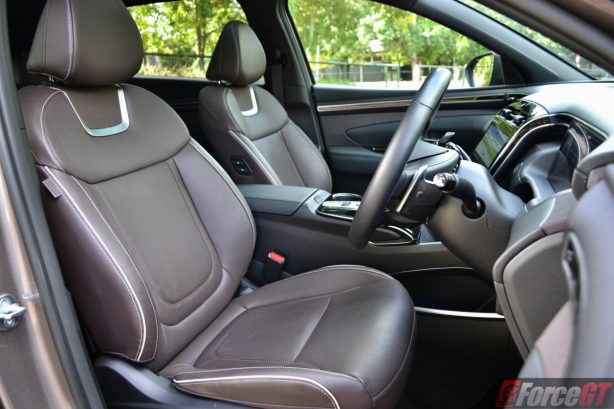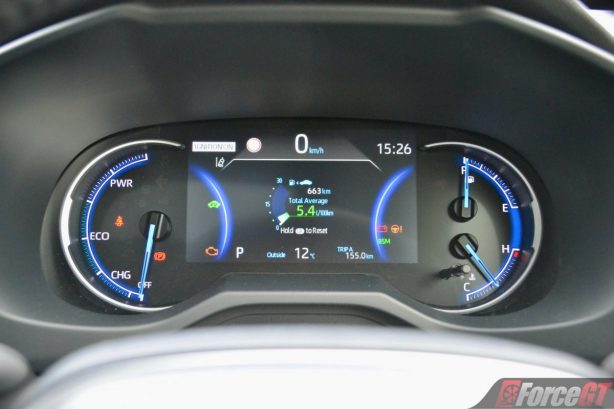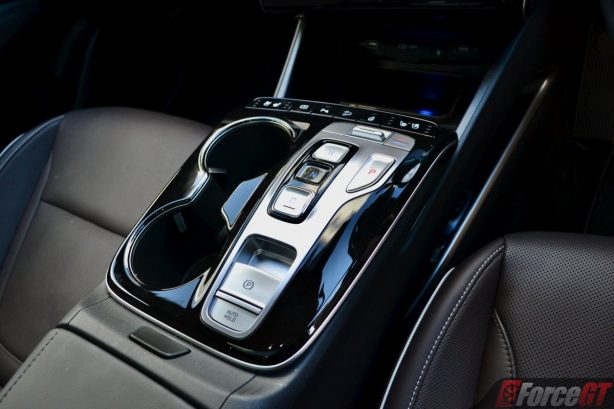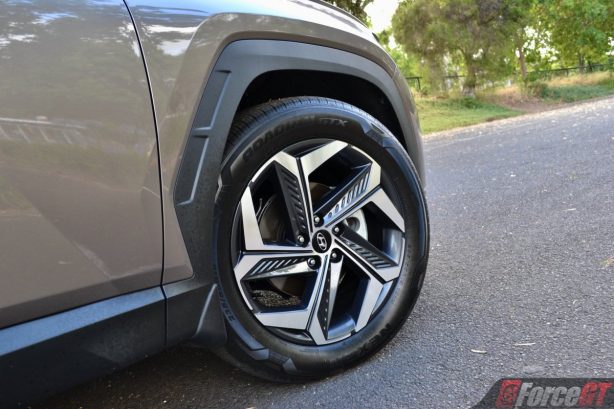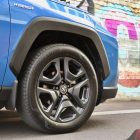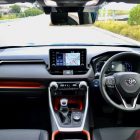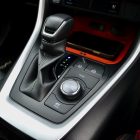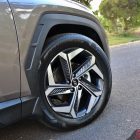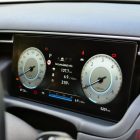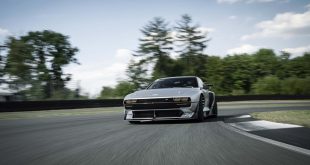Half of all new cars sold in Australia these days are mid-size SUVs. The segment is now literally where young families, couples and empty nesters shop for their main personal transportation. We line up two of the most popular models in this highly competitive segment to help you decide which one to park on the driveway.
The heavyweights
Toyota RAV4, the pioneer of the segment and a family favourite, remains a strong seller in its current fifth iteration. The range comprises petrol and petrol-electric hybrid variants, with two-wheel-drive and all-wheel drive options. Prices range from $34,400 to $52,700 plus on-road costs.
Direct rival Hyundai Tucson may not have such a long history as the RAV4, but in just the span of four generations it has gone from being irrelevant to a big household name in the segment. The line-up is a mix of petrol and diesel models, with two-wheel-drive or all-wheel drive on offer. Competitively priced against the RAV4, it costs between $39,400 and $52,400 plus on-road costs.
Fuel efficiency is high on the agenda for buyers in recent times, which is why we are pitting the RAV4 Edge Hybrid against the Tucson Highlander Diesel in this comparison review. Both are efficiency-focused variants which also happen to be range-topping models in their respective line-up.
Styling
Both the RAV4 and Tucson take on a very different design approach. The former is no doubt the more adventurous looking model while the latter is leaning towards a more premium and classy design.
Being the Edge model, the RAV4 features chunkier front bumper and wheel arch mouldings compared to the regular RAV4 models. The wheels, bespoke to the Edge variant, are also larger as well at 19 inches. All external lightings are LEDs.
The Tucson’s sharp lines and creases cut through the bonnet and sides of the car for a bold and confident yet sophisticated look. Like the RAV4 Edge, in top-spec guise the Tucson Highlander rides on 19-inch wheels and features all-LED lighting, including a very cool light bar that stretches the width of the tailgate.
Interior
The vibe can’t be any more different on the inside. Step into the RAV4 and it’s impossible to miss those orange highlights splattered across the dashboard, centre console and seats. Limited to the Edge variant, the bright trims add a vibrant touch to the interior for sure, but they are not everyone’s cup of tea, certainly not ours.
Another apparent attribute of the RAV4 interior is just how practical and ergonomically perfect it is. The steering wheel is of a good size, the buttons and knobs are all placed where you’d expect to find them and the central touchscreen is within an easy reach of your left arm.
If the RAV4 cabin is all about fit for purpose and usability, then the Tucson’s focus is on flair and premium ambience. The steering wheel feels upmarket and the wraparound dashboard is tastefully styled. The classy design is backed by noticeably higher quality materials and trim inserts compared to those in the RAV4, including a dark headlining adding further sophistication.
Practicality
Both SUVs offer seating for five with generous room for all occupants. With a slightly longer body the Tucson does have marginally more leg room in the back, but the RAV4’s higher and squarer roof line afford more headroom.
While both vehicles have plush seats, the RAV4’s seats are better contoured to the body, thus delivering better comfort and support. However for those who are of bigger build may find the slightly wider Tucson front seats accomodate better.
The RAV4 is also better at storage with compartments tucked at almost every corner of the cabin. In addition to the centre storage and cup holders, there are deep storage trays in the dashboard, large glove box and phone storage tray just fore of the gear lever. The door pockets are thicker than those in the Hyundai, though oddly, the back seat pocket is only found in the back of the passenger seat.
The Tucson may lack the RAV4’s dashboard tray but it’s made up for with a lower storage tray under the centre console. It may not be as easily accessible as the RAV4’s but it’s better at keeping things hidden away for a tidier look.
The RAV4’s boot space is now a capacious 542 litres, matched closely by the Tucson’s 539 litres of capacity. Drop the rear seats in both cars and the space expands to 1690 litres in the Toyota and 1860 litres in the Hyundai.
Tech and safety
Infotainment systems have always been a bug bear of Toyota and unfortunately the RAV4’s system is no exception. Compared to the Tucson’s system, the RAV4’s 8-inch touchscreen is small and the interface looks dated. Given that the RAV4 has had a mild refresh recently, it’s a missed opportunity that the infotainment wasn’t updated at the same time. Granted it’s still fairly intuitive and the physical buttons on either side of the screen are handy.
The Tucson’s 10.25 central touchscreen dispenses crisper, much higher resolution graphics, but it’s not without its problem. Certain buttons on the navigation screen are too small, making them a pain to operate while driving.
The Tucson also features a full digital instrumentation screen and head-up display (HUD), both of which are lacking in the RAV4.
Bluetooth connectivity, AM/FM/DAB+4 radio, Apple CarPlay and Android Auto are all featured in both vehicles, so is a wireless phone charging pad.
Both SUVs feature premium sound system, with the RAV4’s JBL 9-speaker system up against the Tucson’s 8-speaker Bose unit. Both are high performance audio systems but we feel the JBL is just better tuned in the RAV4, with solid bass and high clarity.
In terms of core safety, both cars are comprehensively equipped. Active cruise control, pre-collision safety system with autonomous emergency braking, lane departure alert, road-sign assist (speed sign only), auto high beam, front and rear parking sensors, blind spot monitor, rear-cross traffic alert, and surround view camera are all standard fitment.
Drivetrains
It’s a case of electric assistance against turbo power for these two. The RAV4 is powered a 2.5-litre four-cylinder petrol engine assisted by dual electric motors that together produce a total of 163kW and 221Nm, while the Tucson makes do with a 2.0-litre turbo diesel engine rated at 137kW and 416Nm.
The Toyota sends power through a CVT automatic, whereas the Hyundai pairs its engine with an eight-speed torque converter automatic. Both cars feature all-wheel drive, but unlike the Tucson, the RAV4’s rear axle has no mechanical linkage to the engine, rather it’s driven solely by the rear electric motor. Toyota calls it ‘e-four electric-AWD’.
Performance
With nearly double the amount of torque, the Tucson wins hands down in terms of outright grunt. Clearing the slight initial turbo lag, it pulls effortlessly all the way to the limiter. The eight-speed auto shifts smoothly, harvesting the thick torque band at every shift. The all-wheel drive serves up incredible traction, too, making the drive secure and safe across a variety of road conditions.
Don’t for a second think the RAV4 is a slouch though. Its hybrid powertrain is arguably one of the best in the business. Despite the large torque deficit compared to the Tucson, it’s still surprisingly swift getting off the line thanks to instant torque from the electric motors providing added push. The transition from electric drive to engine power is virtually imperceptible, and the power build up is smooth, linear and wonderfully refined. Toyota’s hybrid system has been fined tuned to perfection over the years and the RAV4’s system is the brand’s best yet.
Handling wise, both SUVs exhibit car-like handling with remarkable composure and grip around corners. The RAV4 delivers a slightly crisper response through a livelier steering, while the positioning of the its hybrid battery just fore of the rear axle helps distribute weight more evenly, resulting in a more neutral handling.
The chassis on both cars are some of the best in the segment. Their rigidity and well-judged suspension tuning mean ride and handling balance is as fined as it can get for a medium SUV.
Ride comfort around town for both cars is good. The RAV4 does ride a tad firmer than the Tucson at low speeds, settling considerably above 50km/h to match the Hyundai’s compliance.
Efficiency and ownership
Both the RAV4 and Tucson come with 5-year unlimited kilometre factory warranty which is pretty standard in the industry these days.
The service interval for both vehicles is identical at 15,000km or 12 months. Both cars are offered with capped price servicing, with the RAV4 costing $230 on average per service for the first 5 years or 75,000km, and the Tucson asking $375 on average for each dealer visit for the same period or distance travelled. This makes the Toyota the cheaper car to maintain in the long term.
The RAV4 will also yield more savings at the bowser, with the hybrid powertrain averaging just 6.0L/100km at the end of our week-long test, which is not far off the rated 4.8L/100km. It’s most efficient around town, where its electric drive gets used the most, lowering fuel use. On the freeway the engine runs more often to maintain high speeds and there’s also less chance for the battery to charge. The engine runs on regular RON 91 unleaded petrol.
In contrast, the Tucson is thriftier on open roads where its diesel engine hustles along effortlessly at low revs. It gets thirstier around town. Nevertheless, with a reported average of 6.5L/100km against the rated 6.4L/100km, the Tucson is still competitively efficient against the RAV4.
Verdict
It’s not easy to choose between the RAV4 Edge Hybrid and the Tucson Highlander Diesel. Both are spacious, up to date, efficient and well equipped mid-size family SUVs that will no doubt offer many years of rewarding ownership.
As we head towards an era of electrification though, the RAV4 hybrid may just be more future proof, while the Tucson diesel may slowly lose its relevancy. Until some sort of electrified Tucson comes along, for now the RAV4 hybrid takes the win.
| 2022 Toyota RAV4 Edge Hybrid | 2022 Hyundai Tucson Highlander Diesel | |
| Design and Comfort | 8.5 | 8.5 |
| Performance and Handling | 8.0 | 8.0 |
| Quality | 7.5 | 8.0 |
| Economy | 8.5 | 7.5 |
| Equipment and Features | 8.0 | 8.5 |
| Overall | 41/50 | 41/50 |
Pricing and Specification
| 2022 Toyota RAV4 Edge Hybrid | 2022 Hyundai Tucson Highlander Diesel | |
| Price (excluding on-road costs): | From $52,700 | From $52,400 |
| Warranty: | 5 years, unlimited km | 5 years, unlimited km |
| Warranty Customer Assistance: | N/A | 1 year roadside |
| Service Intervals: | 12 months, 15,000km | 12 months, 15,000km |
| Country of Origin: | Japan | South Korea |
| Engine: | 2.5-litre four-cylinder petrol-electric hybrid: 163kW 221Nm @ 4,000rpm | 2.0-litre four-cylinder common rail direct injection turbo diesel: 137kW @ 4,000rpm, 416Nm @ 2,000-2,750rpm |
| Transmission: | CVT automatic | 8-speed automatic |
| Drivetrain: | All-wheel drive (e-four) | All-wheel drive |
| Power-to-Weight Ratio (W/kg): | 94.5 | 73.3 |
| Combined Fuel Consumption (L/100km): | Claimed: 4.8/Tested: 6.0 | Claimed: 6.3/Tested: 6.5 |
| Fuel Capacity (L): | 55 | 54 |
| Body: | 5-door SUV, 5-seats | 5-door SUV, 5-seats |
| Safety: | 5-star ANCAP, 7 airbags, ABS, BA, EBD, ESC, Downhill Brake Control, Blind-Spot Collision-Avoidance Assist, Forward/Reverse Collision-Avoidance Assist, Lane Keeping Assist, Rear Cross-Traffic Collision-Avoidance Assist, Emergency Stop Signal, Rear Occupant Alert, ISOFIX | 5-star ANCAP, 7 airbags, ABS, BA, EBD, ESC, Downhill Brake Control, Blind-Spot Collision-Avoidance Assist, Forward/Reverse Collision-Avoidance Assist, Lane Keeping Assist, Rear Cross-Traffic Collision-Avoidance Assist, Safe Exit Assist, Emergency Stop Signal, Rear Occupant Alert, ISOFIX |
| Dimensions (L/W/H/W-B): | 4,615/1,865/1,690/2,690 | 4,630/1,865/1,665/2,755 |
| Turning Circle Between Kerbs: | 11.0 | 11.8 |
| Tare Mass (kg): | 1.725 | 1,773 |
| Entertainment: | 8-inch colour touchscreen, satellite navigation, AM/FM/DAB+, Bluetooth, USB, AUX, Apple CarPlay/Android Auto, JBL 9 speakers premium audio | 10.25-inch colour touchscreen, satellite navigation, AM/FM/DAB+, Bluetooth, USB, AUX, Apple CarPlay/Android Auto, Bose 8 speakers premium audio |
 ForceGT.com Car News, Car Reviews, Video Reviews, Tuning and much more.
ForceGT.com Car News, Car Reviews, Video Reviews, Tuning and much more. 







